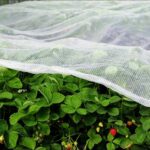Fashion Reinvented: The Rise Of Dissolvable Textiles From Gelatin

In a world where fashion trends change as swiftly as the seasons, a revolutionary innovation promises to transform the way we think about clothing. Imagine a T-shirt that you can wear a few times and, when you get bored of it, simply dissolve it in hot water to create a new garment. This is the vision brought to life by a team of forward-thinking researchers at the ATLAS Institute, University of Colorado Boulder.
Under the guidance of Eldy Lázaro Vásquez, a doctoral student at the ATLAS Institute, and Michael Rivera, an assistant professor in the same institute, the team has developed a DIY machine that spins textile fibres from materials like sustainably sourced gelatin. These “biofibres” not only feel akin to flax fibre but also dissolve in hot water within minutes to an hour, making recycling effortless and eco-friendly.

This DIY machine for spinning gelatin fibres cost just $560 to build. (Credit: Utility Research Lab)
“Our goal is to enable designers worldwide to experiment with creating their own sustainable textiles,” said Rivera. “When you don’t want these textiles anymore, you can dissolve them and recycle the gelatin to make more fibres.”
The motivation behind this innovation stems from a pressing environmental concern. In 2018 alone, Americans disposed off over 11 million tonnes of textiles, contributing nearly 8% to the total municipal solid waste. The researchers envision a future where fashion is not just about style but also about sustainability and responsibility.
Their machine, costing just US$ 560 to build and compact enough to fit on a desk, empowers designers to customize fibres in terms of strength, elasticity and colour. “With this kind of prototyping machine, anyone can make fibres. You don’t need the big machines that are only in university chemistry departments,” Lázaro Vásquez explained.
The innovative machine uses a plastic syringe to heat and extrude droplets of a liquid gelatin mixture. This mixture is then stretched into long, skinny fibres by a set of rollers, akin to a spider spinning its web. The fibres pass through liquid baths where bio-based dyes or other additives can be incorporated. Adding genipin, an extract from fruit, enhances the strength of these fibres.
The potential does not stop at gelatin. The researchers are exploring other natural ingredients like chitin from crab shells and agar-agar from algae, expanding the possibilities for sustainable textiles.
To showcase the versatility of their creation, the team produced small sensors from gelatin fibres, cotton and conductive yarns. When submerged in warm water, the gelatin dissolved, allowing the yarns to be easily recycled and reused. This proof of concept illustrates the potential for designers to create not only fashionable but also functional and recyclable clothing.
“We’re trying to think about the whole lifecycle of our textiles,” said Lázaro Vásquez. “That begins with where the material is coming from. Can we get it from something that normally goes to waste?”
This innovative research was presented in May at the CHI Conference on Human Factors in Computing Systems in Honolulu, highlighting a significant stride towards a more sustainable fashion industry. As the world grapples with the environmental impact of fast fashion, innovations like these offer a beacon of hope for a greener, more responsible future.
In a world where technology and sustainability increasingly intersect, the work of Lázaro Vásquez, Rivera, and their team stands as a testament to the power of innovation in addressing global challenges. Their vision of dissolvable, recyclable textiles could very well be the fabric of the future.
(Source: University of Colorado at Boulder)














